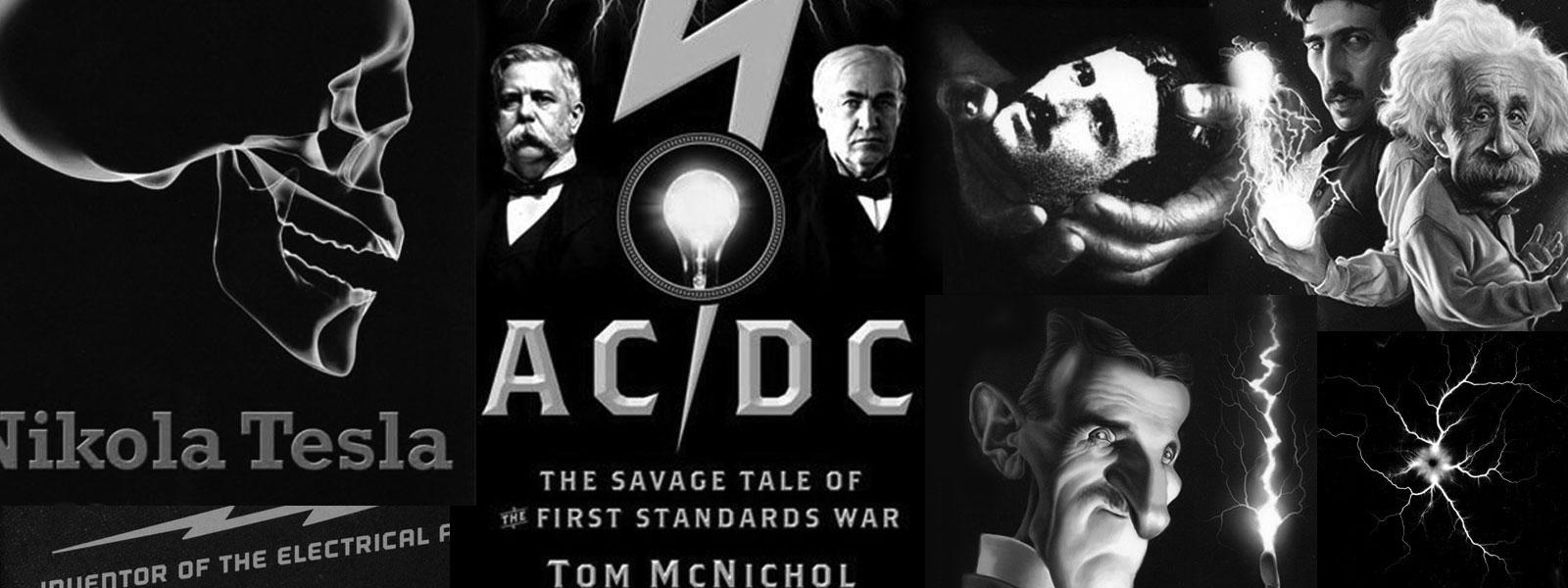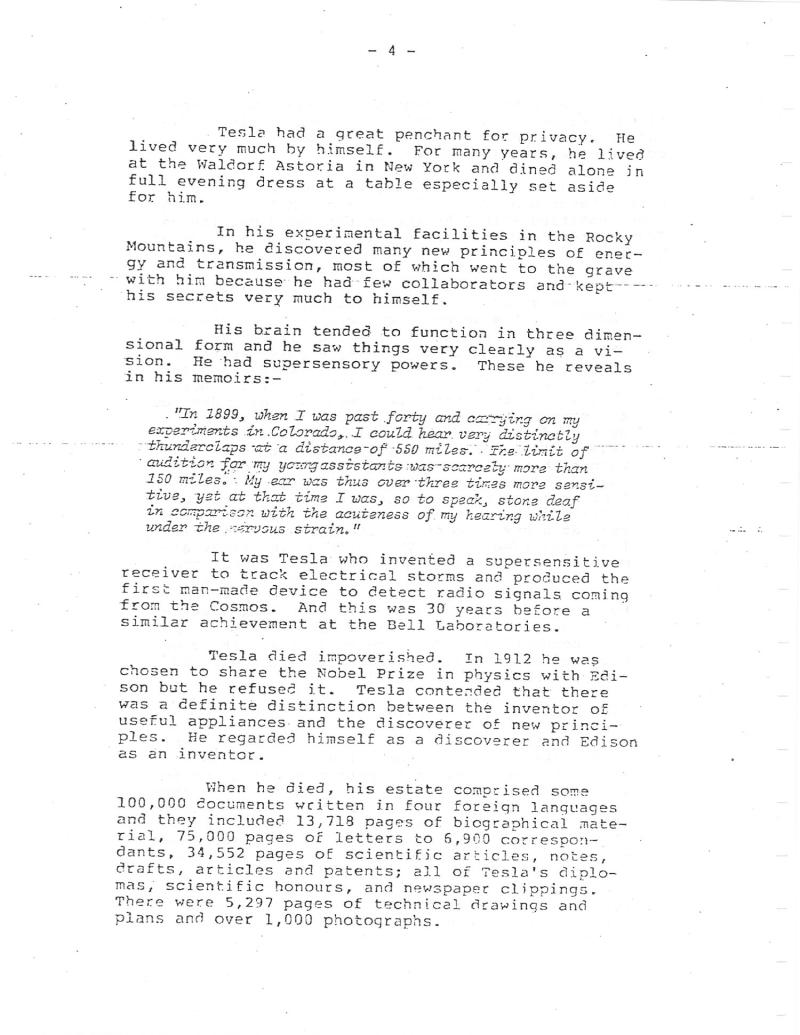
Nikola Tesla Books
Tesla had a great penchant for privacy. He lived very much by himself. For many years, he lived at the Waldorf Astoria in New York and dined alone in full evening dress at a table especially set aside for him. In his experimental facilities in the Rocky Mountains, he discovered many new principles of energy and transmission, most of which went to the grave with him because he had few collaborators and kept his secrets very much to himself. His brain tended to function in three dimensional form and he saw things very clearly as a vision. He had supersensory powers. These he reveals in his memoirs :- "In 1899, when I was past forty and carrying on my experiments in Colorado,. I could hear very distinctly thunderclaps at a distance of 550 miles. The limit of audition for my young assistants was scarcely more than 150 miles. My ear was thus over three times more sensitive, yet at that time I was, so to speak, stone deaf in comparison with the acuteness of my hearing while under the nervous strain. " It was Tesla who invented a supersensitive receiver to track electrical storms and produced the first man-made device to detect radio signals coming from the Cosmos. And this was 30 years before a similar achievement at the Bell Laboratories. Tesla died impoverished. In 1912 he was chosen to share the Nobel Prize in physics with Edison but he refused it. Tesla contended that there was a definite distinction between the inventor of useful appliances and the discoverer of new principles. He regarded himself as a discoverer and Edison as an inventor. When he died, his estate comprised some 100,000 documents written in four foreign languages and they included 13,718 pages of biographical material, 75,000 pages of letters to 6,900 correspon-. dants, 34,552 pages of scientific articles, notes, drafts, articles and patents; all of Tesla's diplomas, scientific honours, and newspaper clippings. There were 5,297 pages of technical drawings and plans and over 1,000 photographs.
